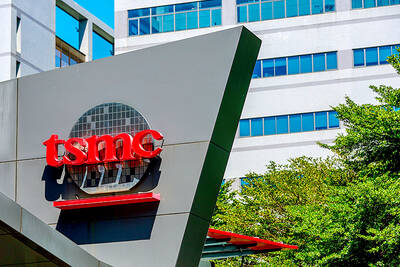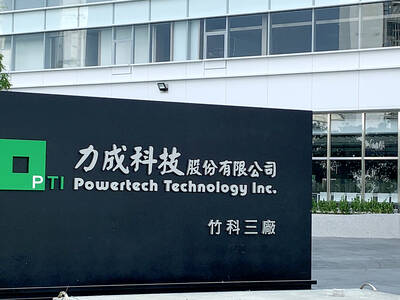The US government has made a "major change" in its foreign-exchange policy that will keep the greenback in a range of between ¥100 and ¥110, said Eisuke Sakakibara, Japan’s former top currency policy official.
“It was a major change in US foreign-exchange policy,” Sakakibara said in an interview with Bloomberg Television yesterday in Tokyo. “There has been a shift of their position because of inflation. They are now talking about intervention.”
US Treasury Secretary Henry Paulson said this month he would “never take intervention off the table” and Federal Reserve Governor Ben Bernanke said he was “attentive” to the dollar’s slump.
Group of Eight officials said at a summit over the weekend that a stronger US currency would help curb oil prices and inflation.
Sakakibara, who correctly forecast in an interview in October that the dollar would plunge, said in March that a US recession could push the yen as high as ¥80 or ¥90 in the next two years.
A professor at Waseda University in Tokyo, Sakakibara was dubbed “Mr Yen” due to his ability to influence the foreign-exchange market during his 1997-1999 tenure at the finance ministry.
Sakakibara said there was a “very small” chance that Japan would agree to joint intervention to limit the euro’s gains against the yen. He said it was unlikely policymakers would buy dollars with yen.
The yen fell to ¥108.40, the lowest level since Feb. 14, before trading at ¥108.24 at 11:25am in Tokyo from ¥108.19 late in New York on Friday. Japan’s currency declined to ¥166.74 against the euro from ¥166.35. The dollar traded at US$1.5405 per euro from US$1.5380. It earlier fell to US$1.5450 per euro.
“A strong dollar is in our nation’s interest,” Paulson told reporters after the G-8 meeting. French Finance Minister Christine Lagarde said she was “happy to hear Paulson clearly say how much the strong dollar policy is indispensable.” Canadian Finance Minister Jim Flaherty and Russian Finance Minister Alexei Kudrin said a stronger dollar would reduce oil prices.
The world economy faces “headwinds” from rising fuel and food costs, G-8 ministers said in Osaka, Japan, in a statement on Saturday that didn’t mention foreign exchange.
“The world economy continues to face uncertainty and downside risks persist,” G-8 officials said in a statement. “Elevated commodity prices, especially of oil and food, pose a serious challenge.”
The G-8, which includes the US, Japan, Russia, Germany, France, the UK, Italy and Canada, stuck to its practice of not making a joint comment on currencies when central bankers are absent.
The price of oil reached an unprecedented US$139.12 a barrel last week and food costs from rice to soybeans have risen to record highs this year.
The dollar has fallen against 11 of the 16 most active currencies this year as oil rose to a record. The US currency’s correlation with oil prices against the euro was minus 0.93 for the past year, according to Bloomberg calculations based on value changes. This means the two move in the opposite direction 93 percent of the time.
Sakakibara is on the Asia-Pacific advisory board of Bloomberg LP, parent of Bloomberg News.

Taiwan Semiconductor Manufacturing Co (TSMC, 台積電) has secured three construction permits for its plan to build a state-of-the-art A14 wafer fab in Taichung, and is likely to start construction soon, the Central Taiwan Science Park Bureau said yesterday. Speaking with CNA, Wang Chun-chieh (王俊傑), deputy director general of the science park bureau, said the world’s largest contract chipmaker has received three construction permits — one to build a fab to roll out sophisticated chips, another to build a central utility plant to provide water and electricity for the facility and the other to build three office buildings. With the three permits, TSMC

RUN IT BACK: A succesful first project working with hyperscalers to design chips encouraged MediaTek to start a second project, aiming to hit stride in 2028 MediaTek Inc (聯發科), the world’s biggest smartphone chip supplier, yesterday said it is engaging a second hyperscaler to help design artificial intelligence (AI) accelerators used in data centers following a similar project expected to generate revenue streams soon. The first AI accelerator project is to bring in US$1 billion revenue next year and several billion US dollars more in 2027, MediaTek chief executive officer Rick Tsai (蔡力行) told a virtual investor conference yesterday. The second AI accelerator project is expected to contribute to revenue beginning in 2028, Tsai said. MediaTek yesterday raised its revenue forecast for the global AI accelerator used

The DBS Foundation yesterday announced the launch of two flagship programs, “Silver Motion” and “Happier Caregiver, Healthier Seniors,” in partnership with CCILU Ltd, Hondao Senior Citizens’ Welfare Foundation and the Garden of Hope Foundation to help Taiwan face the challenges of a rapidly aging population. The foundation said it would invest S$4.91 million (US$3.8 million) over three years to foster inclusion and resilience in an aging society. “Aging may bring challenges, but it also brings opportunities. With many Asian markets rapidly becoming super-aged, the DBS Foundation is working with a regional ecosystem of like-minded partners across the private, public and people sectors

BREAKTHROUGH TECH: Powertech expects its fan-out PLP system to become mainstream, saying it can offer three-times greater production throughput Chip packaging service provider Powertech Technology Inc (力成科技) plans to more than double its capital expenditures next year to more than NT$40 billion (US$1.31 billion) as demand for its new panel-level packaging (PLP) technology, primarily used in chips for artificial intelligence (AI) applications, has greatly exceeded what it can supply. A significant portion of the budget, about US$1 billion, would be earmarked for fan-out PLP technology, Powertech told investors yesterday. Its heavy investment in fan-out PLP technology over the past 10 years is expected to bear fruit in 2027 after the technology enters volume production, it said, adding that the tech would